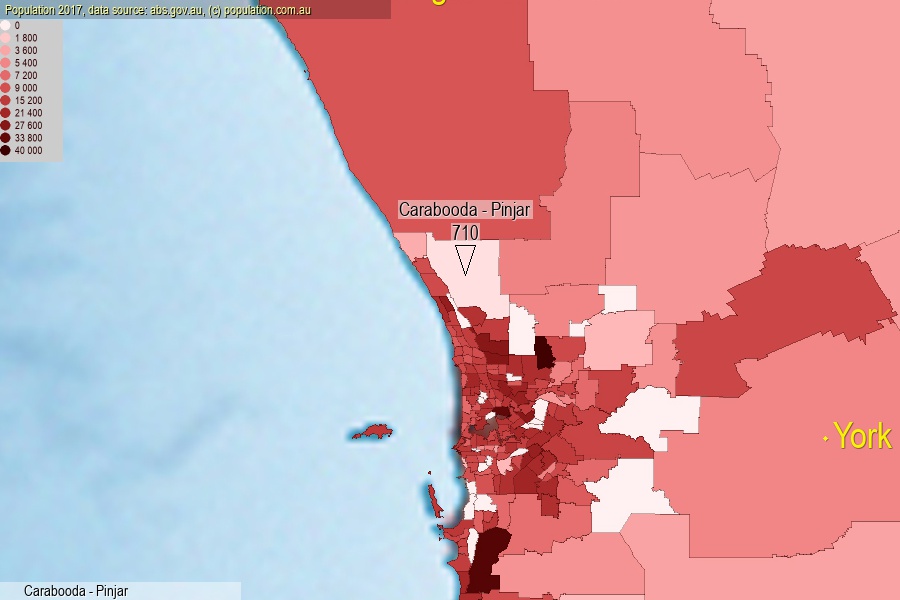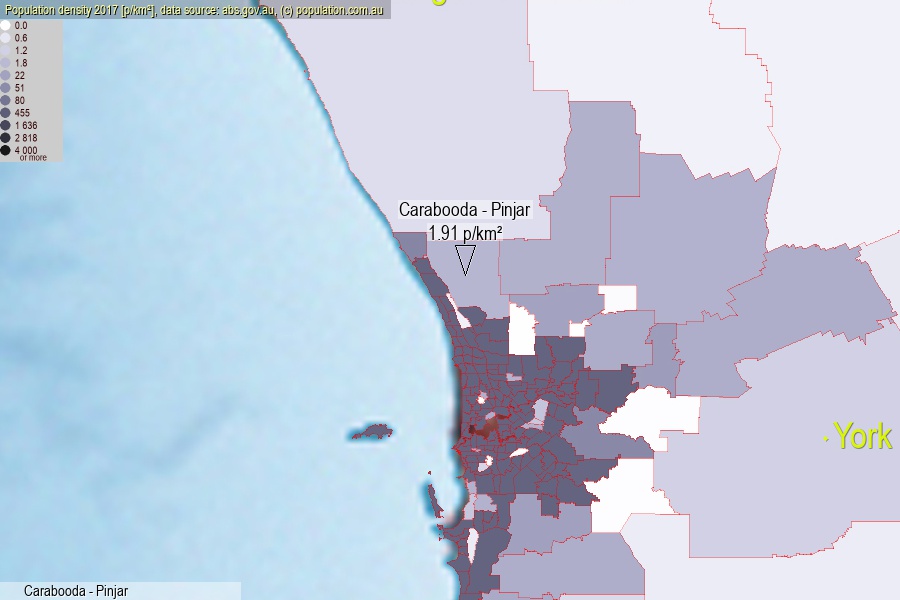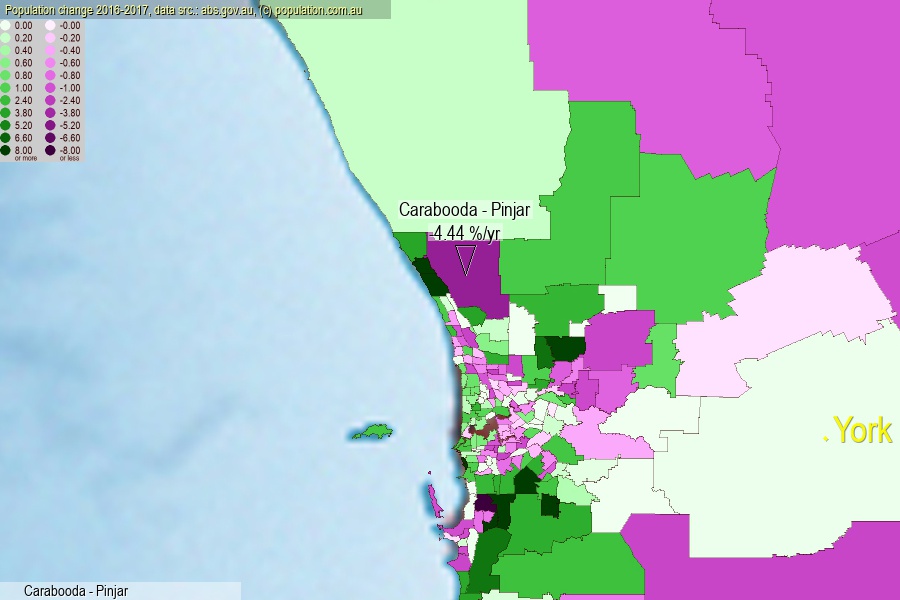 population.com.au
population.com.auLast official estimated population of Carabooda - Pinjar (as Statistical Area Level 2) was 710 people (on 2017-06-30)[2]. This was 0.00% of total Australian population and 0.027% of WA population. Area of Carabooda - Pinjar is 371.10 km², in this year population density was 1.91 p/km² . If population growth rate would be same as in period 2016-2017 (-4.44%/yr), Carabooda - Pinjar population in 2025 would be 494. [0]



Click to enlarge. Carabooda - Pinjar is located in the center of the images.
Population [people], population density [p./km²] and population change [%/year] [2]
View borders » (new window) [4]
[2001-2002] +0.15 %/Yr.
[2002-2003] +0.44 %/Yr.
[2003-2004] +1.31 %/Yr.
[2004-2005] +3.01 %/Yr.
[2005-2006] +3.48 %/Yr.
[2006-2007] +1.88 %/Yr.
[2007-2008] +3.43 %/Yr.
[2008-2009] +2.68 %/Yr.
[2009-2010] +1.62 %/Yr.
[2010-2011] +2.20 %/Yr.
[2011-2012] -3.23 %/Yr.
[2012-2013] -4.70 %/Yr.
[2013-2014] -4.94 %/Yr.
[2014-2015] -1.09 %/Yr.
[2015-2016] +2.62 %/Yr.
[2016-2017] -4.44 %/Yr.
[0] Calculated with linear interpolation from officially estimated population
[1] Read more about SA2 and Australian Statistical Geography Standard (ASGS) on abs.gov.au
[2] Population data from Australian Bureau of Statistics (Population and density: 2017; change: 2016-2017)
[3] Digital Boundaries: Australian Statistical Geography Standard (ASGS) 2016.
[4] Border coordinates are simplifyed using Ramer-Douglas-Peucker algorithm.